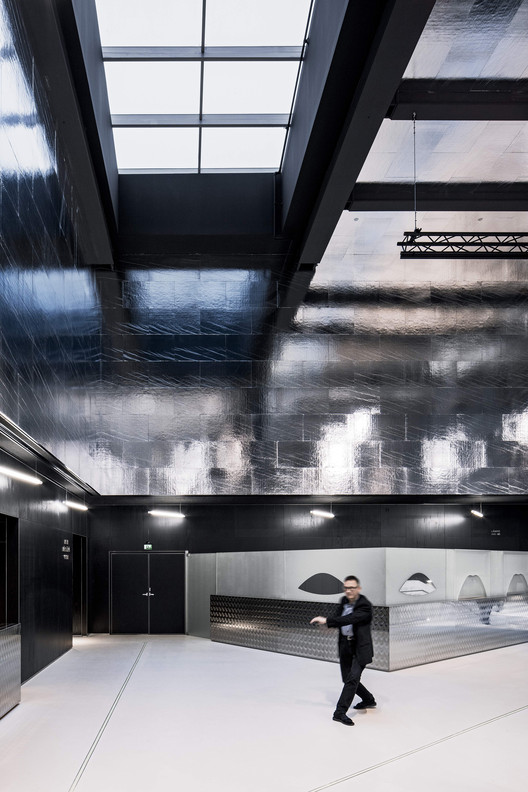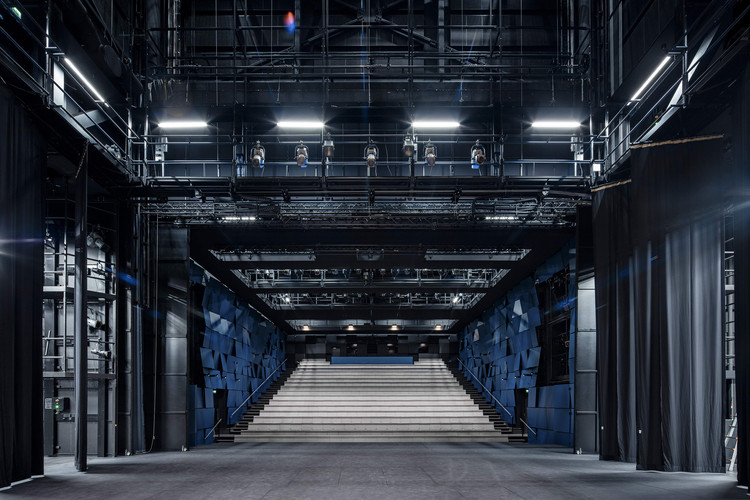
-
Architects: ALA Architects
- Area: 5300 m²
- Year: 2016
-
Photographs:Tuomas Uusheimo
-
Manufacturers: Jakob, Assa Abloy, Saint-Gobain, ELAM Oy, Jaatimet Oy, Rica Auditoria, Rockfon, SKS Mechatronics, Stöbich, Sunotek, Weber, Ypäjän

Text description provided by the architects. The concept for the Lappeenranta City Theatre is exceptional: the theater has been built on the top floor of a shopping center. The idea, however, is ancient as this is theater coming back to its roots, back to the marketplace, back to the people. Millions of people visiting the shopping center annually will be able to enjoy a variety of plays, while the restaurants cater for intermissions and the hotel offers accommodation.

The foyer has a calm monochromatic atmosphere in contrast with the busy bright colors of the shopping center. Only a nearly transparent undulating wire mesh curtain separates the foyer from the shopping arcade below. The audience reaches the theater by walking up a grand white staircase leading from the arcade to the literally theatrical foyer.

This space is designed for performances as much as for dramatic entrances. The mirrored surfaces blur the shape and extent of the foyer; much like an experience one might have standing in the spotlight on the vast stage. In the daytime, the skylight multiplies the colors of the sky onto the foil surfaces like a giant lamp, during the darker hours the walls reflect the vivid lights of the shopping arcade.

The theater is a monument to functionality as virtually all spaces are on stage level. This is the ideal situation: almost all the actions in a theater are directed towards the stage and schedules are generally extremely tight. The stage sets arrive from the basement loading dock to the center of the workshop by a lift the size of a freight container. After assembly, the sets can be pushed directly onto one of the two stages or into the rehearsal hall.


The support spaces outline the halls in a linear procession from the spaces for the technical personnel onwards to props, costume shop and the dressing rooms. This means that the entire theater only has one single corridor, instead of the usual incoherent dark jungle of backstage spaces. The chosen solution also provides all backspaces with ample daylight, which is of great importance for the professionals mainly working on and around stage.




















